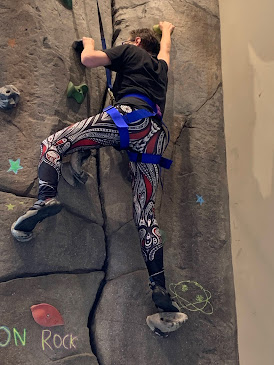Revising and
Editing Poetry
“The way to
stay fresh in poetry is to do something that makes you uncomfortable” –Julie S.
Paschold, to a graduate poetry class at the University of Nebraska-Kearney
I recently
consulted an Advanced Poetry class for graduate students at the University of
Nebraska at Kearney. They were interested
in the subject of editing and revising their poetry.
Here are
some considerations and things to think about when sitting down with one of
your poems, or a collection:
Things to
Consider for One Poem:
·
Is
this a form poem, or free verse?
o
for
form, are you rigidly following the rules, or breaking some of them?
o
for
form, does the poem still make sense and flow?
·
Read
the poem aloud
o
How
does it sound?
§ choppy, smooth, rhyming, flowing
o
Does
it make sense? Is it supposed to?
o
What
is the message? Who is the intended audience?
o
Do
you repeat words—intentionally? Too
much? Do some of them need to be replaced with a synonym or deleted?
o
Is
it too descriptive, not enough?
o
What
can you remove and still maintain the message?
o
What
needs to be rephrased?
o
Is
it too long or short?
o
How
does it end—abruptly? Surprise? Are you satisfied? Do you leave them hanging at
the end? Are you trying to upset them?
·
Have
someone else read the poem aloud
o
How
does it sound?
o
Does
anything stand out…is it supposed to?
o
Do
they stumble on anything?
o
Do
they question something?
o
Is
something missing? Or repetitive?
·
How
does it look?
o
Justification:
Center, Left, Right?
o
One
solid mass? Verses? Indented lines?
·
If
you have quotes: Use quotation marks or italics?
·
If
you have dialogue: Do you use justification for the speakers (one right, one
left)? Or verses? Or fonts? How to distinguish between them.
·
What
is the tone? Horror, humor, sorrow, political, social/society, grief,
romance….are you successful?
·
Does
the “voice” or tone change in the middle of the poem?
·
Line
breaks
o
Are
they natural breaks, when someone would take a breath?
o
Do
you intentionally break in the middle of a phrase or thought, jolting the
person into paying attention, so the poem is jolted, too, breaking the poem or
thought?
o
Are
lines long or short?
o
Is
there a rhythm to them?
o
Is
this more narrative?
o
Do
your sentences dictate a line break, or do you have sentences end in the middle
of a line, indicating flow throughout the poem?
·
Can
you split the poem into two?
·
Can
you merge two shorter into one longer poem?
·
Is
this a chapter poem?
·
Can
you change a form poem into free verse, or a free verse into a form?
·
Can
you add a random line into the middle of the poem to change the tone or message
or add distraction?
Things to
Consider for a Collection:
· What
overall meaning or message are you trying to get across?
o
How
does the title help do this?
·
Are
there sub-groups within the collection?
·
As
the message moves along the collection—what order does this take? How you place
the poems regulates how you create the message.
·
What
length are you looking for? Full manuscript? Small selection for a submission?
Chapbook? Chapter in a manuscript?
·
What
does it have to have, be, or sound like in order to “fit” what you are looking
for?
o
Do
you have to change anything in order to do this?
o
Do
you have to remove or add a poem in order to do this?
o
Do
you have to edit a poem in order to do this?
If you are
too close to a poem, and have trouble emotionally separating yourself from the
subject, either read the poem to another person, or imagine yourself as another
person. Edit as though you were in their shoes: it is a bit of a dissociating
tactic.
I usually
take a break between writing a poem and editing it. I write by hand first, wait
at least a day, then type it up. While typing,
I edit. Then I read it aloud, and type
further. If I am still unsure, I have
someone read it to me and edit again. I
will caution, however: YOU CAN EDIT A POEM TOO MUCH. There is a point when you
need to put a poem away. If you are unsure about whether you are done or not, put
it aside for a while. Or try one of the
last five bullet points in the above list for single poems: breaking it up,
merging, adding a line, changing form, etc. Or accepting it as it is.
In the above quote, I closed by stating that remaining stagnant in a form or method that keeps you comfortable keeps you from growing. Try a form you haven’t before. Use prompts that get you out of your normal thoughts. If you write sad poems, write a humorous one. Write a prose poem if you normally write short poems. Write collaborative poems with another poet. Share poetry with others. Get up and try a poetry slam, or just try reading in front of an open mic. Do something you normally wouldn’t. This keeps you fresh, keeps you growing and improving and developing as a poet and as a person.
I hope this helps! Let me know if you found this useful.
Thanks for
reading,
Julie S.
Paschold,
author of Horizons
(Atmosphere Press)
jpaschold@gmail.com
https://jpaschold.blogspot.com
https://medium.com/@jpaschold
12.7.23








